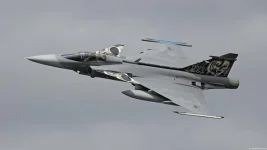- Views: 378
- Replies: 3
State-owned enterprise Bharat Dynamics Limited (BDL) has notably increased the manufacturing rate of the Astra Mk1 missile system.
This acceleration aims to ensure the Indian Air Force (IAF) can quickly restock its inventory of these advanced weapons, particularly important given the strategic environment and ongoing tensions with neighbouring Pakistan.
The Astra Mk1, an indigenous Beyond Visual Range Air-to-Air Missile (BVRAAM), can engage aerial targets over 110 kilometres away, significantly enhancing India's capability to control airspace from a distance.
The Indian armed forces are actively integrating the Astra Mk1. Both the Indian Air Force and the Indian Navy have commenced the induction process.
Within the IAF, the Sukhoi Su-30MKI and the Tejas Mk1 fighter aircraft are now certified to operate the missile, greatly improving their ability to engage enemy aircraft from afar.
Concurrently, the Indian Navy is conducting flight trials of the Astra Mk1 on its MiG-29K fighter jets, preparing for its full operational use within the naval air arm.
Sources indicate that BDL is currently producing dozens of Astra Mk1 missiles each year. This enhanced production capacity is vital for maintaining sufficient weapon stockpiles, ensuring that missiles used in training or required during potential high-intensity conflict situations can be rapidly replaced.
Establishing a robust domestic production line for sophisticated weaponry like the Astra Mk1 is a key strategic achievement, reducing India’s reliance on international suppliers, especially during critical times.
Developed by India's Defence Research and Development Organisation (DRDO), the Astra Mk1 represents a significant advancement in the nation's indigenous defence manufacturing sector.
It offers the armed forces a modern, highly effective air combat solution comparable to missile systems procured from other countries.
Furthermore, the successful deployment of the Astra Mk1 paves the way for future upgrades. Development and testing are underway for the next iteration, the Astra Mk2.
This successor missile is anticipated to feature an extended range, potentially exceeding 160 kilometres, and incorporate advanced technology like a dual-pulse rocket motor for improved performance during the final phase of engagement.


